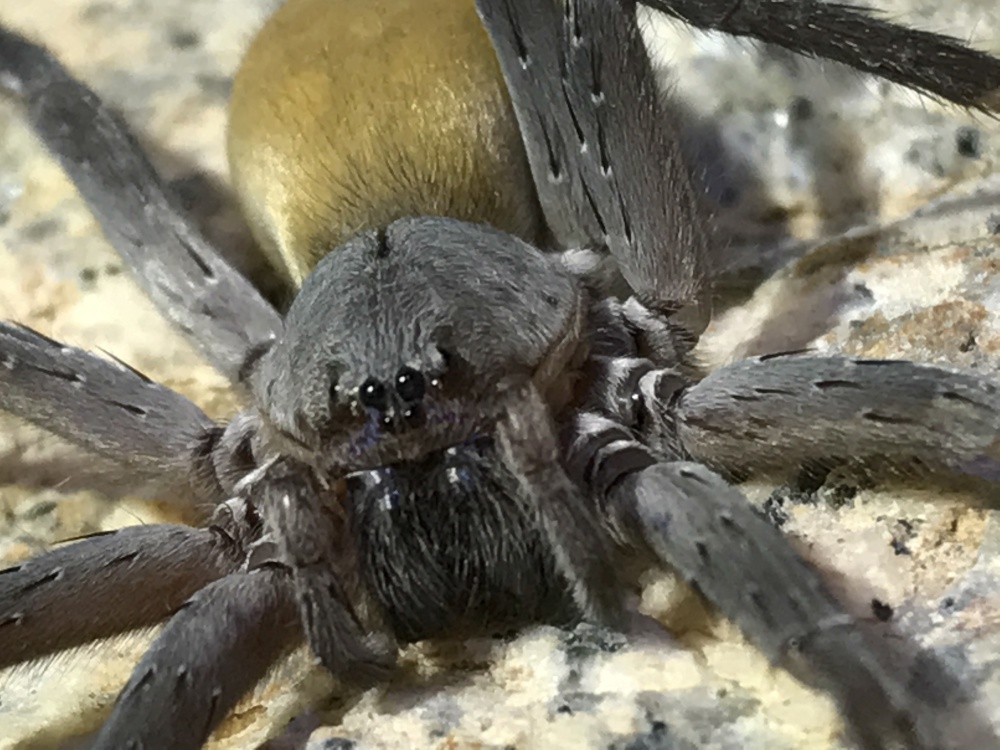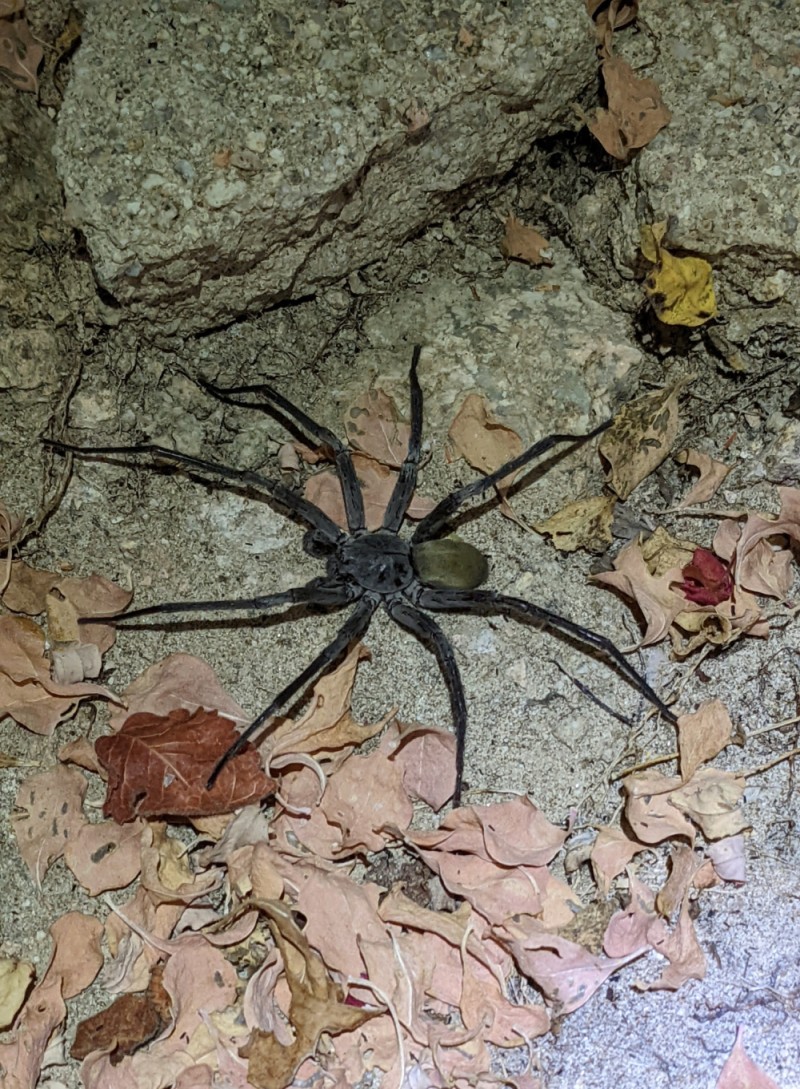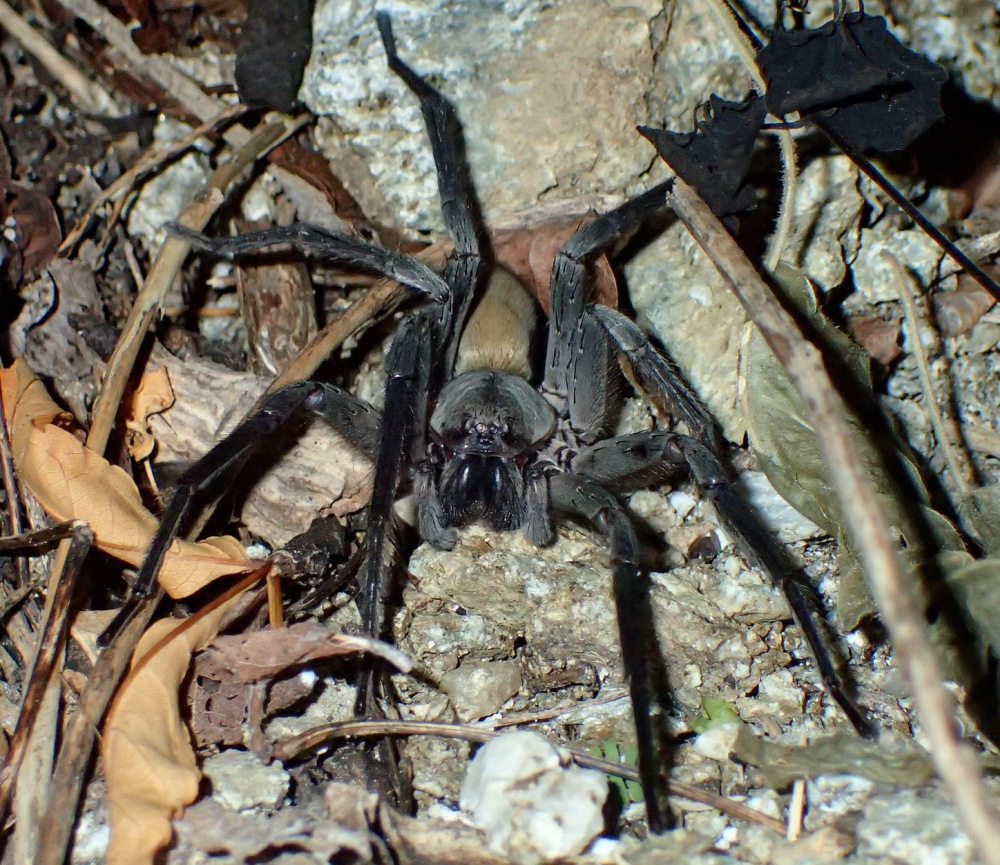If you’re afraid of spiders, don’t read this.
 Image credit: Lizette
Image credit: Lizette
Mine spiders are spiders that live in caves, tunnels, or mines, often in dark and humid environments. Some of them are venomous and can cause serious harm to humans – the sting of some can even prove fatal. Recently, a new species of mine spiders has been discovered in an abandoned mine in Mexico, and with its eight beady eyes, thick fang-like structures, inch-long hairy body, and legs spanning four inches across, it pretty much looks like something out of a horror movie.
The new spider was found by a team of researchers from the San Diego Natural History Museum, who were exploring the Sierra Cacachilas, a small mountain range in Baja California Sur. They noticed a huge exoskeleton hanging from the ceiling of a cave, and decided to return at night, when the spider would be more active. They were amazed to see a spider with a body roughly the size of a softball.

The researchers collected eight specimens of the spider and sent them to Maria Luisa Jimenez, an expert on Baja spiders from the Centro de Investigaciones Biológicas del Noroeste. She confirmed that the spider was not only a new species, but also a new genus, meaning that it was very different from other related spiders. She named it Califorctenus cacachilensis, after the mountain range where it was found.
The researchers collected eight specimens from different locations, including an abandoned mine shaft and a pit toilet. Jimenez said that she had never seen a spider this large in her years of collecting spiders on the peninsula.
The newly discovered species has a coffee brown head and legs, and a yellow abdomen with some iridescence. It has visible fangs, but its bite is not fatal to humans, unlike that of its cousin, the Brazilian wandering spider, one of the deadliest spiders in the world, whose venom can cause severe muscle paralysis and respiratory failure, ultimately leading to death.

Image credit: jorgehvaldez
Jim Berrian, one of the researchers who found the spider, experienced a bite of Califorctenus cacachilensis and described it as “like being poked by a cactus spine and a little mild pain.” The spider is nocturnal and hunts for prey on the ground. It is not aggressive, but will defend itself if threatened.
The discovery of the new spider species important for several reasons. First, it adds to our knowledge of the biodiversity of Mexico and the world. The researchers estimate that there are about 150 species of ctenids in Mexico, but only 20 have been formally described. This means that there are many more spiders waiting to be discovered and studied.
Second, it shows that even large and conspicuous animals can remain hidden from science for a long time. The Sierra de las Cacachilas is not a remote or inaccessible area; it is close to La Paz, the capital city of Baja California Sur. Yet, no one had noticed this spider before. This suggests that there are still many surprises in nature, even in places that seem familiar.

Finally, the discovery have implications for conservation and human health. The spider is endemic to the Sierra de las Cacachilas, meaning that it is found nowhere else in the world. This makes it vulnerable to habitat loss and degradation caused by human activities. The researchers hope that their discovery will raise awareness and interest in protecting this unique ecosystem. Moreover, the spider may have potential medical applications, as its venom could contain compounds that could be useful for treating diseases or pain.




